The Explorer’s Daughter is currently taught on the Edexcel GCSE/IGCSE English Language Paper 1 curriculum. It is one of the 10 non-fiction texts which students answer on in Section A. This post will guide you through my The Explorer’s Daughter IGCSE lessons with activities.
The central theme – hunting – causes strong and sometimes divisive reactions in students. Most people have an opinion on hunting either way. A great way into this text is to explore the issue with students. The narrator’s conflict as she describes the majestic narwhal facing up to the courageous hunters evokes a range of emotions from the reader; but how can we support students to capture that in their exam essays? How can we break it down to consider not only the message from a critical stance, but how Herbert conveys her conflicting thoughts and feelings about hunting the narwhal through multiple language and structural techniques?
The Explorer's Daughter Lessons with Resources
I’ve created a scheme of work for busy teachers to take you step-by-step through the text. The Explorer’s Daughter IGCSE lessons with activities contains everything from an engaging, thought-provoking starter, to identifying language techniques, to analysing and annotating the text, to practising Edexcel GCSE style questions on the text, including the Question 4 12-marker. This resource contains editable Google slides, quizzes with answer keys, sample exam questions, example exam answers and close textual annotations of the whole GCSE extract. All activities are ready to download and print in PDF form or there are links for you to personalise them if you wish.
Edexcel GCSE/IGCSE English Language Paper 1 Exam Structure
The 2 hour 15 minutes Edexcel IGCSE English Language Paper 1 Exam is split into Section A and Section B. Section A is the reading assessment and candidates are presented with one of the 10 Anthology non-fiction texts and one thematically linked unseen text. They have 5 questions to answer in Section A:
- A 2 -mark retrieval question. Lifting and copying two brief and relevant quotes from the unseen text is the skill being assessed in this question.
- A 4-mark summary question. Candidates are asked to paraphrase a certain event, character or theme from the unseen text.
- A 5-mark ‘SQUID’ question (it’s an acronym not a slimy sea creature!). Students identify five distinct details from the unseen text and use quotations to support their points.
- A 12-mark extended analytical response on the seen text.
- A 22-mark comparative essay, usually based on the writers’ perspectives, experiences or feelings.
Section B is a writing assessment. Candidates choose between two options, which are normally loosely based on the Section A texts. The text types include a letter, article, speech or leaflet. Both Section A and Section B are equally weighted, worth 45 marks each.
The Explorer's Daughter PDF IGCSE Activities
Firstly, I introduce the topic of hunting. Students discuss their initial opinions and I quickly gauge their reactions and thoughts. I then play them a short 4–5-minute video about hunting the narwhal which introduces them to many of the ideas and themes in the extract. Following some notes and questions, we again have a discussion about the theme of hunting.
Before diving into the text, I quickly review key language techniques in the extract so that they are fresh in students’ minds as they read. A matching activity is included in this resource. Students match the definition and technique, which they can either copy, cut and paste or simply number. As an extension, students can write their own examples of the techniques. This is also a useful revision tool for The Explorer’s Daughter and any English exam. When they know the language techniques implicitly, they naturally refer to them in their analysis and raise their marks.
The Explorer's Daughter IGCSE Extract Text Annotations
Before close textual analysis, I often ask students to do an initial reading with 2 different coloured highlighters. They highlight language which depicts the beauty and respect of the narwhal in one colour and admiration and understanding for the hunters in another. It is a fairly straightforward extract for students to understand on a surface level – a description of a narwhal hunt. The challenge comes in unpacking how Herbert presents the conflict in hunting these beautiful animals, deemed essential to the Inuit people.
When it comes to closely analysing the text of the extract, there are a few ways of approaching the activity. You can read and annotate together with students completing the annotations in real time. Alternatively, you can split students into groups and ask each group to focus on a certain paragraph before feeding back to the class. Or you could read and discuss, then ask students to complete the annotations for homework.
There are many ways of approaching close textual analysis; I find that varying the method for different texts keeps students interested through the unit. This The Explorer’s Daughter IGCSE scheme of work contains detailed annotations of the whole extract.
Edexcel GCSE/IGCSE English Language Paper 1 Exam Question 3 Mark Scheme and Structure
After analysing the text, I do a quick AFL quiz with students to assess their understanding of the language and structure of the text, then introduce exam practice questions. Quiz questions for a straightforward low stakes true and false quiz with answers are available on the slides and in PDF form with this resource. Depending on your time and the nature of your class, you can do this as a whole class activity on the interactive whiteboard or handed out to students to do in pairs or individually.
Questions 1, 2 and 3 on the Edexcel IGCSE English Language Paper 1 exam test students’ understanding of the unseen text, whereas question 4 assesses analysis and evaluation of the previously studied text. When you teach the 10 non-fiction texts, it’s useful to focus on one or two of the questions per text. That way, you can teach the structure, rubric and help students to plan and write quality responses. You have time for self and peer assessment as well as model answers. Over the span of studying all 10 texts, students will cover all question types from the language exam.
In this The Explorer’s Daughter IGCSE lessons with activities resource pack, there is a prompt in the style of the 3-mark question and the 12-mark question 4 from the Language Exam Paper 1 Section A. For the 3-mark question example, I would explain how students gain full marks using the SQUID method, ask them to answer the question available on the slides, then self or peer assess straight away. There is a mark scheme available in the The Explorer’s Daughter scheme of work. Using this method, they get immediate feedback and can achieve highly on a low stakes question before moving on to the more challenging 12-mark question 4.
The Explorer's Daughter Question 4 Example Answers
For the question 4 prompt, firstly, take students through the rubric so that they familiarise themselves with how the response is awarded. Then, you can take students through the example PETER paragraph (point, evidence, technique, explain, refer). If you wish, you can ask them to order the parts of the example paragraph, so they grapple with the concept of a cohesive paragraph. This way, there are scaffolds in place to support students to produce high quality responses.
Included in this The Explorer’s Daughter scheme of work, I have provided 3 example Question 4 responses of varying quality. For each response, ask students to put themselves in the examiner’s shoes and mark the answer using the rubric. Then, students can explain what the answer did well and areas to improve. As an extension, students can develop the weakest example answer. Hold a class discussion about the answers before revealing the examiner’s marks (included in the notes on the slides).
Essentially, to be awarded full marks, there should be evidence of perceptive analysis. I explain to students that the answer goes beyond ‘obvious’ points and draws out the writer’s range of feelings and relation to the reader. Consider whether the writer changes their perspective and how language and structure connect for effect, for example a long syndetic list can also contain strong, emotive verbs.
The Explorer's Daughter Hunting Debate Lessons and Activities
There are also a couple of creative activities included in this resource. Time-permitting, this is a fantastic text to base a debate around. Split the class into groups and ask them to prepare for and against arguments for hunting and present. You could have a jury and a judge and give a time limit to each side. Other students can ask the for and against speakers questions to develop their arguments. This helps with speaking and listening and develops evaluative, critical thinking. They could also write an article for the school magazine on hunting, taking a pro or con stance or alternatively writing a balanced argument. This can help develop skills required for Section B of Paper 1 (Transactional Writing) and Section B of Paper 2 (Imaginative Writing).
The Explorer's Daughter Teaching Resources Edexcel GCSE English Language
To sum up, some of the best techniques for teaching the 10 non-fiction texts that I included in my The Explorers Daughter GCSE lessons and activities comprise:
- Hook students with an intriguing starter activity
- Use alternative methods to closely analyse and annotate the text
- Quiz students for quick AFL strategy to assess whether they are engaging with the text
- Practise either questions 1-3, question 4 or question 5 from the Language paper
- Study model answers, including examples of typical mistakes students make in the exam responses
- Offer an optional creative activity as homework or an extension to challenge students’ perceptions of the text
Good luck teaching The Explorer’s
Daughter – it’s a thought-provoking text that just could change your mind
about hunting practices in the Arctic. Comment below if you can add any useful teaching
and learning techniques for this text.

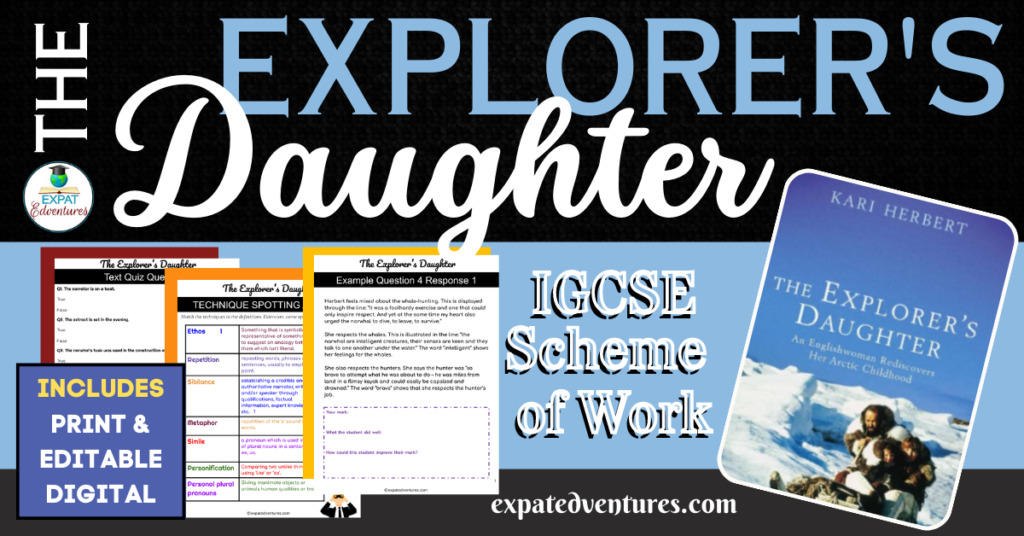

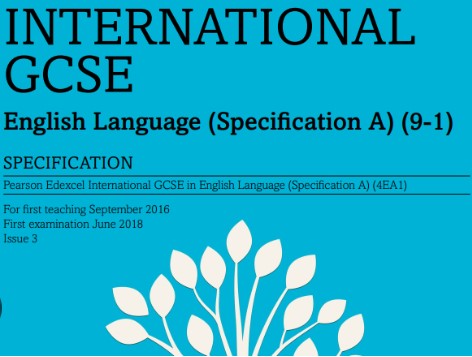
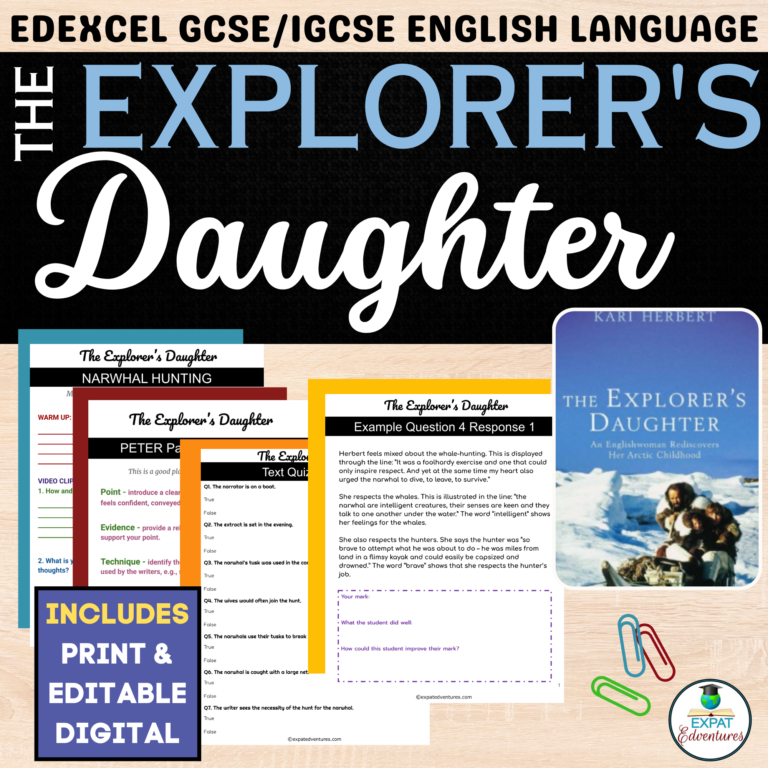
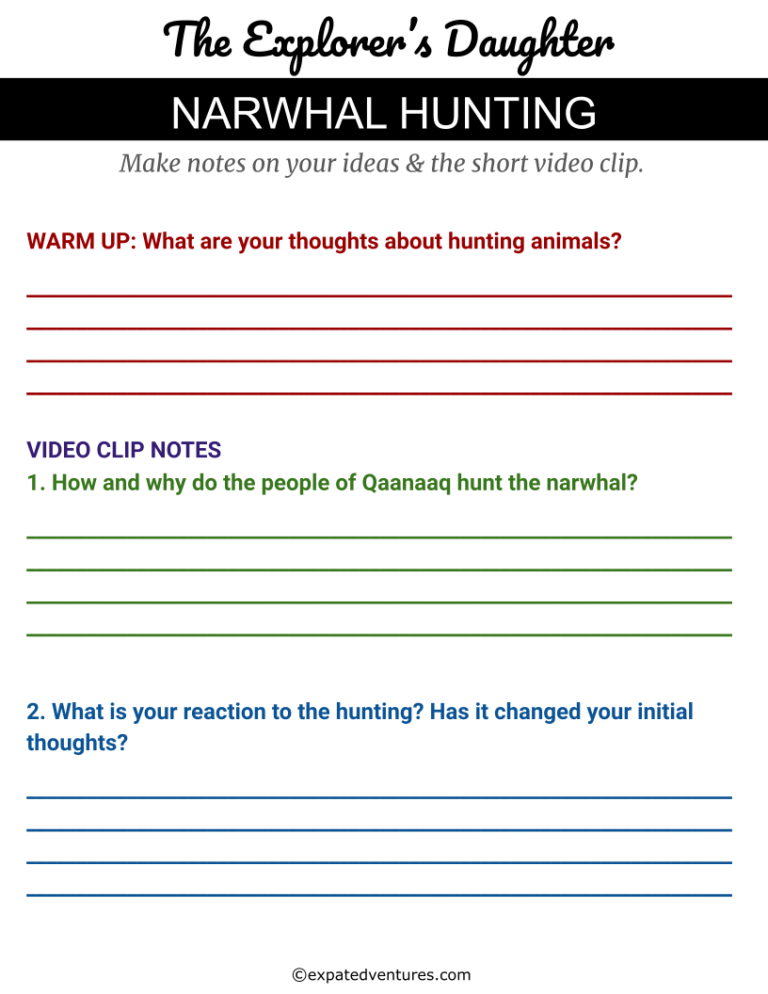
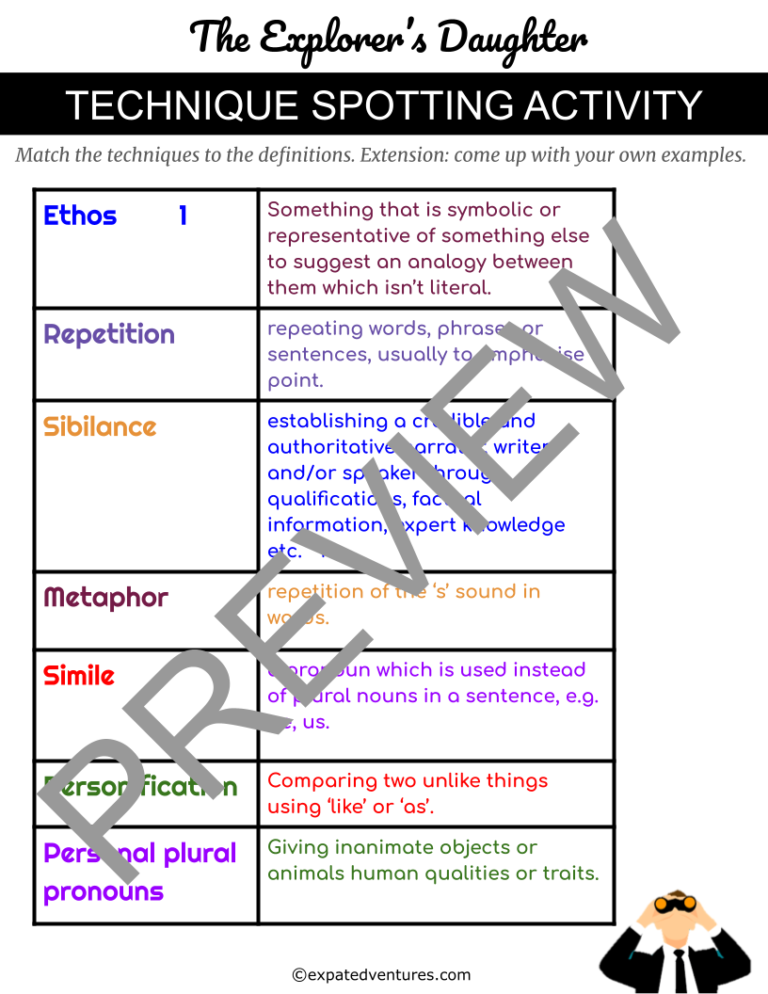
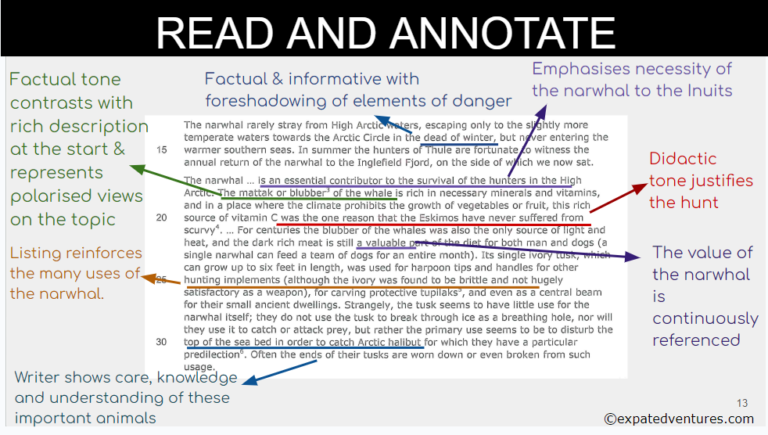
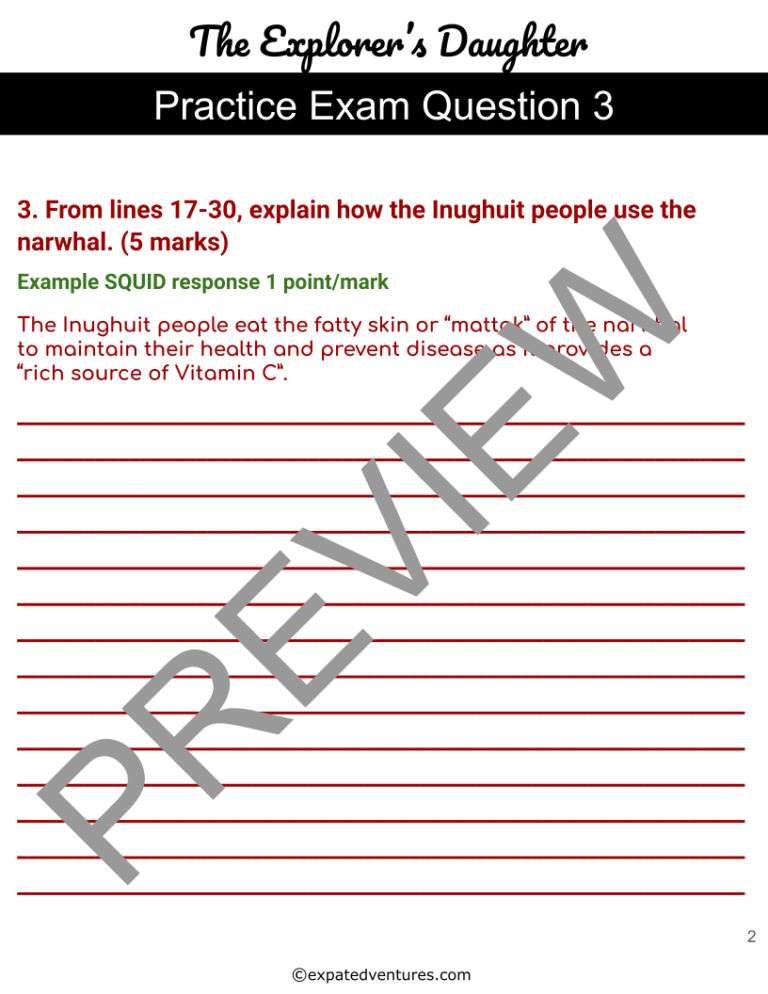
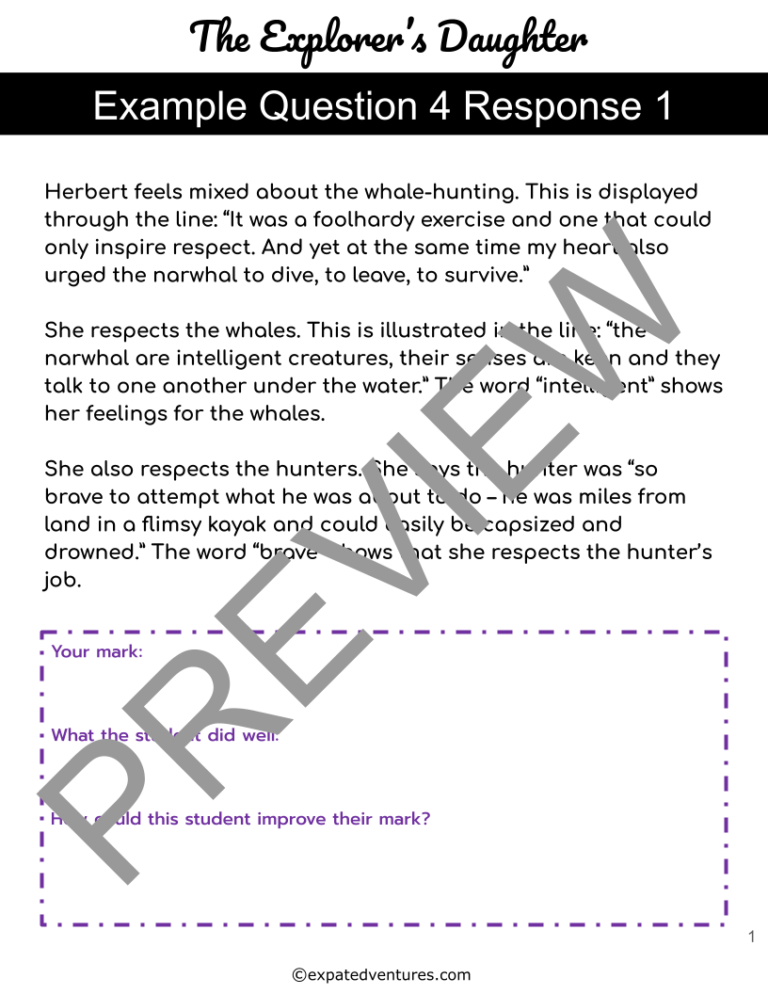

Pingback: Edexcel 'Out, out-' GCSE Poetry Unit - Expat Edventures